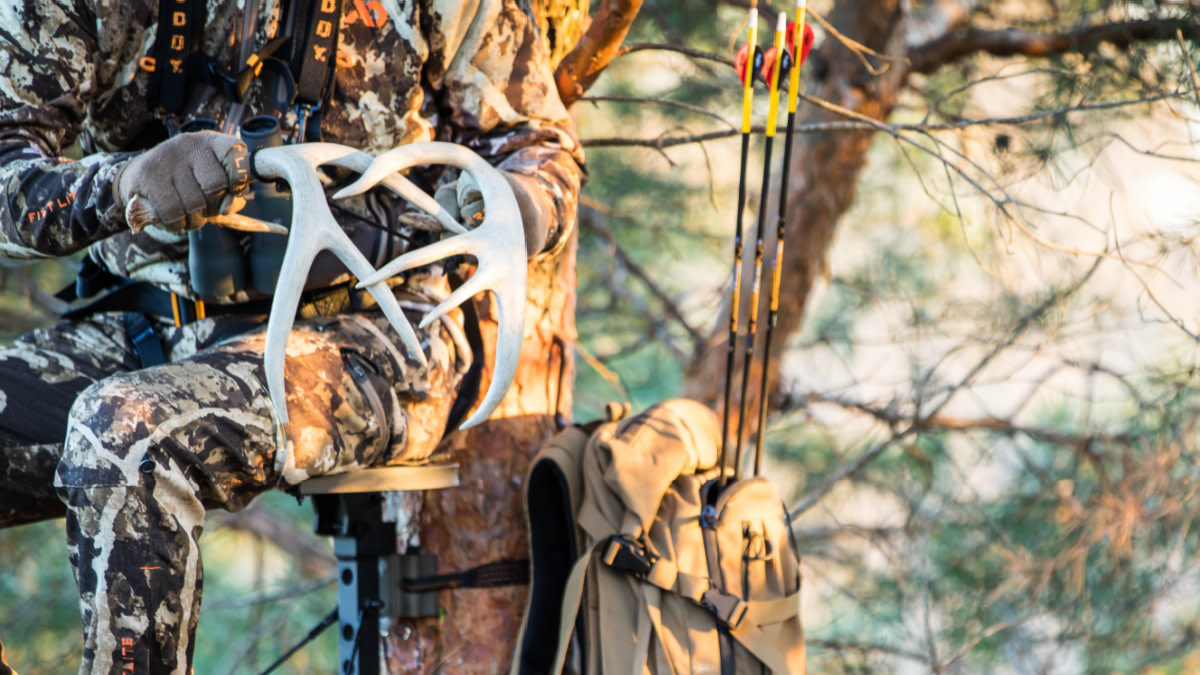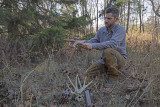
On managed properties, hunter interactions with bucks are considered non-life-threatening until the bucks reach the trophy antler or age kill criteria. After they reach such benchmarks, they have a high tolerance for human intrusions and are very responsive to hunter tactics—they’ve responded without consequence while growing to maturity.
Aggressive rattling sequences used to call in mature bucks on managed properties (like the ones seen on TV) will rarely work on heavily pressured public lands. Few public land bucks reach over three years of age, and those that do are extremely good at avoiding hunters and their call tactics. Otherwise, they’d be dead. So on Michigan public land, where bowhunters creep across every inch of the landscape, I make infrequent, low-volume rattling or sparring sequences. Here are some tips for those calling sequences.
Rattling/Sparring For a rattle or sparring sequence to work on public land, it must be performed properly, in the right season at the right time of day and most importantly, in the right location. Otherwise it might be detrimental to both the success of your hunt and the success of future hunts at that location.
After many observations, bucks are much aggressive and loud when fighting for breeding rights than they are when sparring for pecking order.
I use a mesh rattle bag with loose wooden dowels to ensure I’m not too loud. Large real or fake antlers are likely to make overly aggressive and loud sequences that will spook bucks.
Rattling sounds are louder than sparring sounds and are made by pulling the sticks apart and clashing them together and twisting the sticks aggressively. Sparring sounds are made by slightly clashing the sticks and rolling the sticks together for softer sounds.
In a fight, the initial clash of antlers and loud rattling sounds take 5 to 10 seconds while the push for dominance takes 10 or more seconds with intermittent rattling sounds. There should be twice as many silent periods as noise periods during a sequence. The initial clash should get the attention of whatever bucks are in the region, and if they’re interested, the rattling sounds thereafter will allow them to lock in on your position.
Several minutes after the first sequence, perform another softer sequence and then quit. If a buck is responding from a distance, the softer volume will give direction. Wait at least an hour if you want to perform another session.
To perform subtle sparring sequences, replicate the rattling sequences with half the volume.
Seasonal and Daily Timing Sparring sequences work best during the first couple mornings of a season. A mature buck who hasn’t been turned nocturnal by pre-season scouting pressure may respond to sparring sequences to establish social pecking orders.
I will then wait until pre-rut (around October 25) when testosterone levels have risen and their desire to breed can override their security precautions. This makes them vulnerable to rattling or sparring.
I generally use these tactics an hour after daybreak, a half an hour before dark, and during middays in the midst of the rut, too. Mature bucks seemingly move with more caution during evenings and rarely make themselves vulnerable outside the security of their bedding area until after dark.
In pressured areas, mature bucks commonly transition into their bedding areas before the sun comes up, so on morning or all-day sits, be on stand and settled in an hour and a half before dawn to avoid spooking deer as they’re making their way back to bed.
Types of Locations Prime locations include bedding areas, perimeters of standing corn fields, active scrape areas, and in transition corridors. Every location must at least offer adequate security cover around the kill area and adequate transition security cover to a known bedding area. On pressured public land, the odds of a response in open timber or open areas are extremely low.
Your odds of seeing deer at destination mast or fruit tree locations and active scrape areas are good, so hunt them clean without any calling a few times. Even then, don’t ruin a location with frequent sessions. If you don’t get a response, put your device away and focus on the remainder of your hunt. In pressured areas, other hunters are also using tactics and a mature buck can easily become immune to responding to all of them.
When hunting the interior of a bedding area, plan for an all-day sit that starts an hour and a half prior to daybreak and ends a half hour after dark so as not to spook deer before they leave the bedding area. Depending on the property’s layout and availability of security cover, there is a chance mature bucks get up and scent check for doe activity between 11:00 a.m. and 3:00 p.m. during the rut.
If a buck hangs up out of range, perform a single, low-volume grunt to entice him in. It takes two bucks to fight or spar, so don’t make another sequence as he will not come in without visual confirmation of other bucks present. Your grunt, on the other hand, could be coming from an individual buck hidden behind security cover.
Scent Control Bucks will typically beeline directly to a location in response to a rattle or grunt, so if you’re scent control is compromised and you hunt the wind, you should know where a buck would come from before calling so you don’t get winded. You could also use a decoy as a visual to entice a buck to a specific spot. Make sure the decoy is upwind of your location.
Follow these tips on public land, and you'll be in the best position to call in a pressured buck.
Feature image via Captured Creative.






